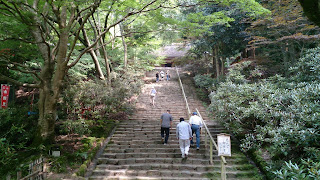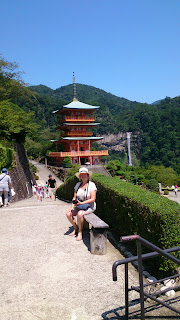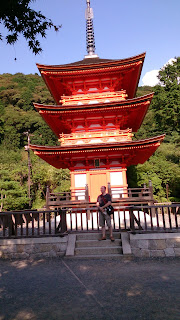Basically, there are 2 models: the good old trustworthy hole-in-the-ground model and the techo model.
The first one needs little explanation: get in position, do your thing and flush:
The more advanced models closely resemble the Western-style toilets with the addition of a control panel:
Everything is labeled in Japanese but quite often, the basic functions are also described in English. So what's with all these buttons? Depending on the model, there is button for flushing a lot of water and another one for flushing just a little bit. Sometimes the button or lever is hidden behind the toilet or you have a big button on the wall. The more smarter toilets just flush automatically.
Note that the seat is warmed which much be great in the winter but one can do really without when the weather is warm. I only found a button to switch this off on one toilet.
Another knob sprays your behind (there is also one specifically for the feminine parts). You can control the water pressure and depending on the model, the temperature of the water, switch between a non-stop stream and an interleaved stream. Make sure that you know where the "STOP" button is before engaging the butt spray! Some toilets also have a dryer installed.
In Japan, toilet noises are a bit of a taboo. That's why there is also a button which generates sound (e.g.: running water) so that you can mask your trumpet solo and other assorted noises.
As you can see on the photos, there are many other buttons. I haven't found out what they are for and didn't dare to press them in case I inadvertently activated the ejection seat.
So all in all, using the toilet in Japan is quite enjoyable once you've figured it out.


























































